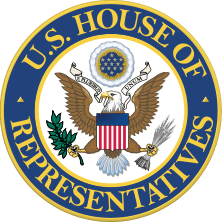Press Releases
House Committee Approves Posey’s Bipartisan Plan to Increase Estuary Funding for Critical Needs
Washington,
September 17, 2014
Tags:
Indian River Lagoon
Today the House Transportation and Infrastructure Committee approved by unanimous vote, legislation (H.R. 5266) to reauthorize funding for the National Estuary Program (NEP). Rep. Posey, one of four principle co-authors of H.R. 5266, was able to secure the inclusion of his bipartisan plan (H.R. 5117) to increase available funding for estuaries with critical needs like the Indian River Lagoon. In July, Posey and Rep. Patrick Murphy introduced the Estuary Urgent Needs Priority Program Act to meet high priority needs across the nation’s 28 national estuaries.
“This common sense plan will help provide critical funding for our nation’s estuaries, and make available additional funding to estuaries that are experiencing urgent and challenging ecological problems, including our own Indian River Lagoon,” said Rep. Posey. “I’m pleased to see this important legislation move forward in a strongly bipartisan manner.” Posey’s plan directs the Environmental Protection Agency (EPA) to provide awards in addition to estuary base grants for estuaries that are experiencing urgent and challenging ecological problems. Some problems include: sea grass loss, reoccurring harmful algal blooms and invasive exotic species or jellyfish proliferation. These awards would be provided on a competitive basis and would be funded through funds already authorized for the NEP program. The base bill also secures higher levels of funding for each estuary’s base grant. Under H.R. 5266, the National Estuary Program is reauthorized for Fiscal Year 2015 at $27 million, almost $2 million more than what was appropriated for Fiscal Year 2014. Posey’s plan makes 15% of appropriated funds available for the additional competitive awards to estuaries with urgent needs. The bill also gives direction to the EPA to ensure that no less than 80% of the funding is reserved for estuary base grants. The National Estuary Program, which enjoys broad bipartisan support, was created in the 1987 Clean Water Act Amendments. It is run through the U.S. Environmental Protection Agency to protect and restore water quality and ensure ecological health of estuaries of national significance. There are 28 “estuaries of national significance” that span multiple states and congressional districts all over the country. Each estuary uses local input and local priorities to create a management plan that addresses the issues of water quality and ecological health. |



